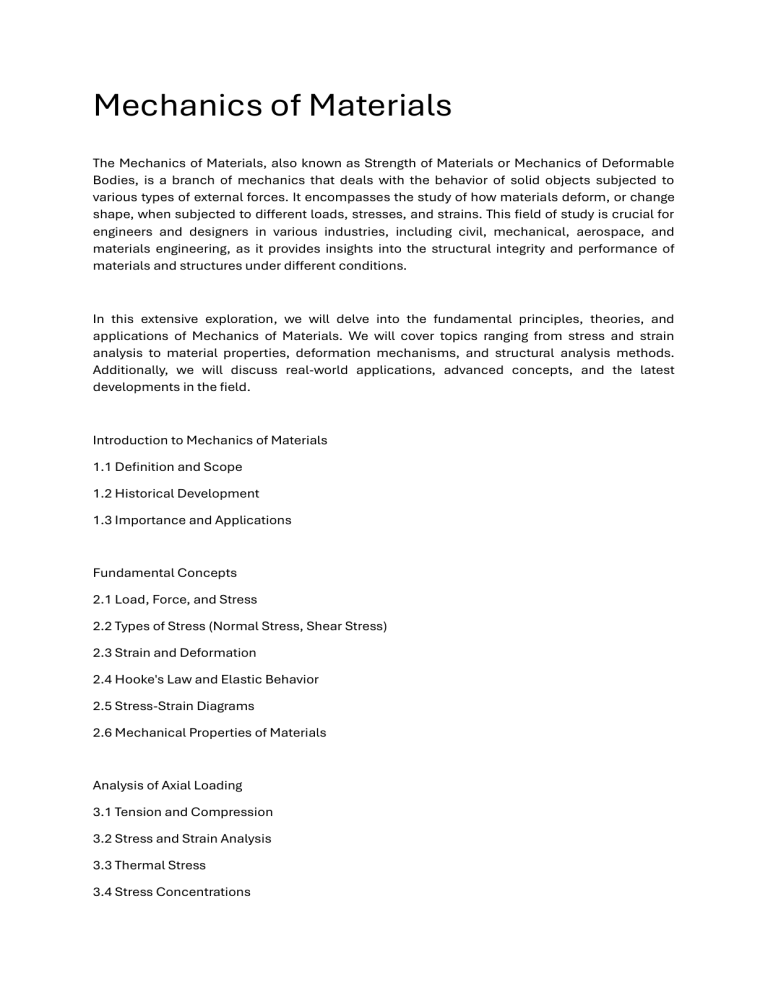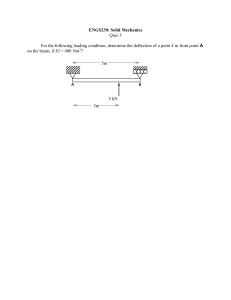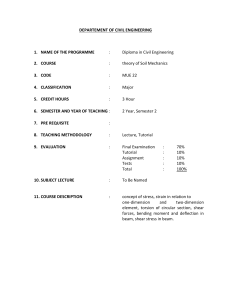
Mechanics of Materials The Mechanics of Materials, also known as Strength of Materials or Mechanics of Deformable Bodies, is a branch of mechanics that deals with the behavior of solid objects subjected to various types of external forces. It encompasses the study of how materials deform, or change shape, when subjected to different loads, stresses, and strains. This field of study is crucial for engineers and designers in various industries, including civil, mechanical, aerospace, and materials engineering, as it provides insights into the structural integrity and performance of materials and structures under different conditions. In this extensive exploration, we will delve into the fundamental principles, theories, and applications of Mechanics of Materials. We will cover topics ranging from stress and strain analysis to material properties, deformation mechanisms, and structural analysis methods. Additionally, we will discuss real-world applications, advanced concepts, and the latest developments in the field. Introduction to Mechanics of Materials 1.1 Definition and Scope 1.2 Historical Development 1.3 Importance and Applications Fundamental Concepts 2.1 Load, Force, and Stress 2.2 Types of Stress (Normal Stress, Shear Stress) 2.3 Strain and Deformation 2.4 Hooke's Law and Elastic Behavior 2.5 Stress-Strain Diagrams 2.6 Mechanical Properties of Materials Analysis of Axial Loading 3.1 Tension and Compression 3.2 Stress and Strain Analysis 3.3 Thermal Stress 3.4 Stress Concentrations 3.5 Material Selection for Axial Loading Torsion 4.1 Torsional Deformation 4.2 Shear Stress in Circular Shafts 4.3 Power Transmission 4.4 Torsion of Non-circular Sections 4.5 Torsional Failure Criteria Bending and Shear Forces 5.1 Types of Bending 5.2 Bending Stress and Strain 5.3 Shear Stress in Beams 5.4 Shear Flow 5.5 Bending and Shear in Composite Beams Deflection and Stiffness 6.1 Moment-Curvature Relationship 6.2 Deflection of Beams 6.3 Slope and Displacement 6.4 Stiffness and Flexibility 6.5 Beam Deflection Analysis Methods Combined Loading 7.1 Superposition Principle 7.2 Mohr's Circle for Plane Stress 7.3 Principal Stresses and Strains 7.4 Stress Transformation 7.5 Maximum Shear Stress Criteria Energy Methods 8.1 Strain Energy 8.2 Castigliano's Theorem 8.3 Virtual Work Principle 8.4 Applications of Energy Methods Stability of Structures 9.1 Buckling of Columns 9.2 Euler's Formula 9.3 Lateral-Torsional Buckling 9.4 Beam Stability 9.5 Stability Analysis Methods Advanced Topics 10.1 Plastic Deformation 10.2 Yield Criteria 10.3 Creep and Fatigue 10.4 Fracture Mechanics 10.5 Finite Element Analysis Applications in Engineering 11.1 Structural Design 11.2 Material Selection 11.3 Failure Analysis 11.4 Aerospace Engineering 11.5 Automotive Engineering Future Directions and Challenges 12.1 Nanomechanics 12.2 Bioengineering Applications 12.3 Smart Materials 12.4 Computational Mechanics 12.5 Sustainable Materials and Design Throughout this comprehensive overview, we will explore the underlying principles, mathematical formulations, and engineering applications of Mechanics of Materials. By understanding how materials respond to external forces and environmental conditions, engineers can design safer, more efficient structures and devices across various industries. Moreover, as technology advances and new materials are developed, the study of Mechanics of Materials continues to evolve, offering new insights and challenges for researchers and practitioners alike.




